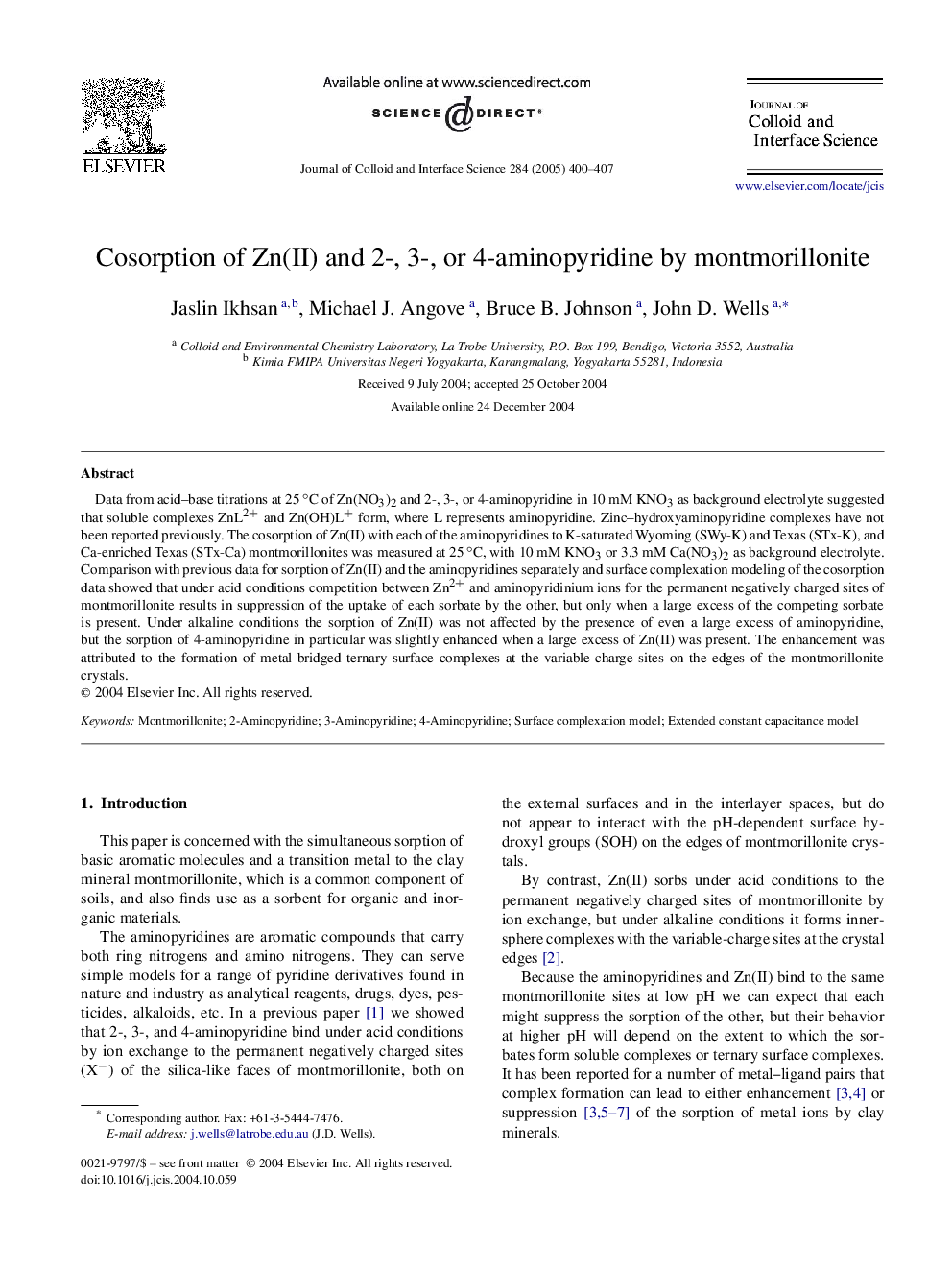| Article ID | Journal | Published Year | Pages | File Type |
|---|---|---|---|---|
| 10378207 | Journal of Colloid and Interface Science | 2005 | 8 Pages |
Abstract
Data from acid-base titrations at 25â°C of Zn(NO3)2 and 2-, 3-, or 4-aminopyridine in 10 mM KNO3 as background electrolyte suggested that soluble complexes ZnL2+ and Zn(OH)L+ form, where L represents aminopyridine. Zinc-hydroxyaminopyridine complexes have not been reported previously. The cosorption of Zn(II) with each of the aminopyridines to K-saturated Wyoming (SWy-K) and Texas (STx-K), and Ca-enriched Texas (STx-Ca) montmorillonites was measured at 25â°C, with 10 mM KNO3 or 3.3 mM Ca(NO3)2 as background electrolyte. Comparison with previous data for sorption of Zn(II) and the aminopyridines separately and surface complexation modeling of the cosorption data showed that under acid conditions competition between Zn2+ and aminopyridinium ions for the permanent negatively charged sites of montmorillonite results in suppression of the uptake of each sorbate by the other, but only when a large excess of the competing sorbate is present. Under alkaline conditions the sorption of Zn(II) was not affected by the presence of even a large excess of aminopyridine, but the sorption of 4-aminopyridine in particular was slightly enhanced when a large excess of Zn(II) was present. The enhancement was attributed to the formation of metal-bridged ternary surface complexes at the variable-charge sites on the edges of the montmorillonite crystals.
Related Topics
Physical Sciences and Engineering
Chemical Engineering
Colloid and Surface Chemistry
Authors
Jaslin Ikhsan, Michael J. Angove, Bruce B. Johnson, John D. Wells,
